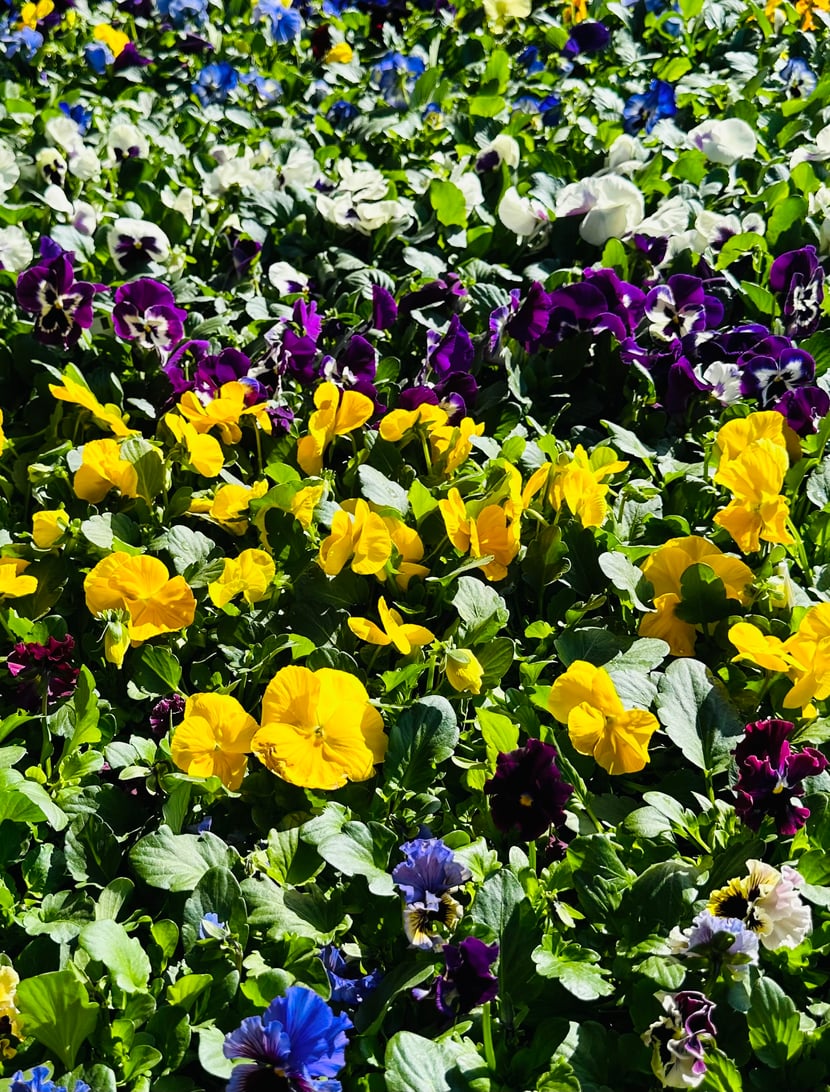March in Missouri; pockets of bright, sunny days begin to burst forth, making us ecstatic for spring. People question, how early to plant their blooming flowers and foliage plants outside, and what plants can take near-freezing temperatures? Here are some recommendations for cool season annuals that will transition your home and garden into a colorful botanical haven early in spring.
Annuals are plants that do not come back year after year. In the wild, these plants often propagate via seed, and consequently produce beautiful blooms to attract pollinators. Blooming for extended periods of time (throughout the spring or summer), annuals are particularly famous for providing exceptional seasonal color. Annual plants can be separated into two categories: cool season plants and warm season plants.
Cool season
Respective to their name, cool season annuals can withstand temperatures between 40-60 degrees Fahrenheit, devoting most of their flower power to the months of March, April, and May. Some, like pansies and kale, can tolerate temperatures at or slightly below freezing, often maintaining colorful blooms with temperatures hovering slightly below the freezing mark, and sometimes even being covered in snow. In a protected location, pansies can withstand single digit temperatures, though their blooms may shrivel and their foliage freeze and turn pale. Soon, as the weather warms, they will recover and produce new blooms.
What to Plant:
There are a variety of cool season items to choose from- visit your local garden center and explore your options! Examples of cool season annuals include:
- Pansies
- Violas
- Ornamental kale/Cabbage
- Snapdragons
- Nemesia/Diascia
- Stock
- Pocketbook plant
- Lobularia/Sweet alyssum
Some homeowners may wish to incorporate cool season vegetables into their early spring annuals pots and flower beds, for a practical (and tasty!) addition. From edible pansy and viola blooms to veggies like kale, cabbage, Swiss chard, lettuce, and even garden peas, these culinary options provide texture, color, and utility to the early spring patio or garden.
When to plant:
For springtime display, plant cool season flowers and foliage in late February or early March.
For fall planting, wait until mid-September when the temperatures have begun to cool back down. In some cases, pansies and kale may survive a winter if in a protected location, watered, and covered in extreme temperatures (single digits and below).
Bloom maintenance & transitioning your flower beds into the warm season:
Pansies and snapdragons benefit from having their blooms picked periodically. Pinch or snip wilted or faded blooms back to the main stem. This also encourages more blooms to develop. Trailing annuals like sweet alyssum also benefit from periodic trimming as their blooms fade.
As spring slows to a close in mid-May, 60+ degree weather will signal a shift for your cool season annuals, too. Blooming flowers may fade and go to seed or develop an overall “wilting” appearance. This provides the perfect opportunity to incorporate those heat-loving, drought-tolerant plants that stand up against the Missouri summer sun. By this time, the last frost date will have passed, and your garden will be prepared to reset for summer.
Escape the winter doldrums and cure your spring fever with cool season annuals- a colorful transition to the promising warmth of the coming months!

